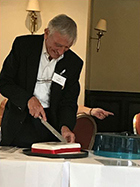 The Project was an experimental project funded by the DHSS with “pay and rations” delivered by South-Western Regional Health Authority. The project received the BCS award for the pioneering and innovative implementation of an on-line medical information system, which was in use long before the current computer medical systems were developed.
The Project was an experimental project funded by the DHSS with “pay and rations” delivered by South-Western Regional Health Authority. The project received the BCS award for the pioneering and innovative implementation of an on-line medical information system, which was in use long before the current computer medical systems were developed.
The initial investigations and design work started in the early 1970s and the full system was up and running by 1978, when BCS presented the Project with its award.
40 years ago, if you had been a patient at Exeter’s Princess Elizabeth Orthopaedic Hospital or the RD&E Wonford Hospital, or a patient at one of two GP surgeries, you would have been familiar with the sight of the Consultant, GP, administrative staff or nurse using a VDU and keyboard for inputting and retrieving patient information utilising one common database - the integrated patient record (IPR).
The design of the IPR was such that it could be built up over time. The core or hub of the system was the patient identity section, a record shared by all authorised users of the system. It could be accessed via indexes which were appropriate to the individual department: General Practitioner Records, Inpatients, Outpatients, Ward Nursing, Hospital Services and Health Centre Services.
Strict rules were applied as to who could read records and who could update them, all controlled through individual passwords.
The Project used an ICL 1904 with over 100 VDUs plus associated hard copy printers. There were development teams dedicated to each of the user departments, and a team of operators kept the system running 24/7.
By 1978 the Project was fully operational having achieved virtually all of its design goals. However, the nature of the hardware meant it was too expensive to replicate. Nevertheless, many of the ideas and features can be seen in current on-line patient information systems.
In 1983 the Project was wound down and the Integrated Patient Record database was split up.
It was spread across various ICL and DEC mini-computers thus destroying the essence of the Project: the IPR. After the split the separate systems ran on for many years.
And what became of the staff? All in all, solving the many problems inherent in such an innovative project provided insights and experience that contributed to interesting and varied careers.
For more information contact: Robert.macdonald@bcs.org or mary.clarkson@bcs.org

















